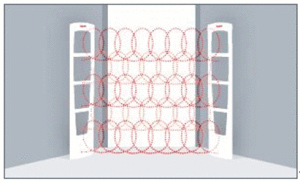 According to the National Retail Federation-NRF organized retail crime costs the retail industry approximately $30 billion each year. 97% of the retailers surveyed admit to being victims of organized retail crime in their stores, and the problems of organized retail crime, employee theft and shoplifting do not seem to abate. The solution to this devastating problem seems to elude retailers, law enforcement, and communities across the country.
According to the National Retail Federation-NRF organized retail crime costs the retail industry approximately $30 billion each year. 97% of the retailers surveyed admit to being victims of organized retail crime in their stores, and the problems of organized retail crime, employee theft and shoplifting do not seem to abate. The solution to this devastating problem seems to elude retailers, law enforcement, and communities across the country.
To read more about this and other topics, follow the links below.
How to Build a Loss Prevention Program in a High-Risk Store
Integrating an effective loss prevention program can yield dramatic improvements when it comes to mitigating inventory shrinkage. But aligning an LP department appropriately within the structure of an existing company is not an easy thing to do. It is crucial to ensure that the LP team becomes an essential component of the entire store process.
Which Stores are High-Risk?
It makes sense to target the stores with the highest amount of loss risk first in order to make the greatest impact from the very beginning. When Stage Stores decided to realign its loss prevention department in the early 2000s, for example, the LP corporate manager worked with regional managers to rank stores based on shrinkage performance and its change over time.
Other attributes that were factored into the grouping evaluation included geographic location, internal and external theft history, and employee turnover rates. They eventually landed on a bundle of 50 stores that could be designated as “high-risk” and decided to focus their attentions on these stores.
Employee theft cited as largest cause of retail loss
Crime cost retailers £2.34 billion last year, according to a recent survey conducted by conference series Retail Risk London, and the UK Retail Fraud Survey 2016.
Employee theft was identified as the single biggest cause, with 68% of retailers citing it as their top area of loss.
Published by Retail Knowledge and sponsored for the second consecutive year by WIS International, the survey is the most extensive report into the systems, processes and strategies of the UK’s top retailers available, and covers retail transactions accounting for some 32% of all UK retail sales online and offline through 34,950 stores across the UK.
Shrinkage rates vary by retail sector from mass merchants and department stores at 2.68% of sales to a low of 0.25% of sales for hospitality and leisure retailers. However, mass merchants and department stores have seen a massive increase in shrinkage rates since last year, of 58% whereas hospitality and leisure retailers have seen a decrease of 38%.
Employee involved in retail theft ring that stole $11,000 from Clinton outlet store
CLINTON–Police are trying to find a group responsible for stealing $11,000 in merchandise from a store at Clinton Crossing.
A group that was connected to an employee at the POLO outlet in the mall was able to steal the merchandise between January and March 2016. The scam worked by having the employee, who was a cashier, void large transactions but still place the merchandise in shopping bags for the customers. The customers were involved in the scam, and left with the stolen merchandise.
The same “customers” were involved during all the transactions.
The employee at POLO admitted to the scam, but she refuses to name the other suspects. Police are not yet naming her or saying if she’s been charged.
The suspects may be from the New London area. If you have information please call Clinton Police at 860-669-0451 or email [email protected].
 Do you REALLY know how to stop shoplifters? I mean, really know? Your Checkpoint System is only half of the strategy. You spent the money, put the labor/time into using labels and tags but after the newness wears off, are you still having more losses than you want?
Do you REALLY know how to stop shoplifters? I mean, really know? Your Checkpoint System is only half of the strategy. You spent the money, put the labor/time into using labels and tags but after the newness wears off, are you still having more losses than you want?
 It’s no big secret that I can’t stand a thief; I did make a career out of catching them. Shoplifters really get under my skin, but employee theft really fires me up. You put people to work, give them opportunity to grow and instead of putting in the long hours, hard work and dedication needed to move forward, they steal from you. They betray your trust, slap you in the face and take money out of your pocket and food off your family’s table. Will you ever stop employee theft completely? Probably not. You can, however, minimize the risk.
It’s no big secret that I can’t stand a thief; I did make a career out of catching them. Shoplifters really get under my skin, but employee theft really fires me up. You put people to work, give them opportunity to grow and instead of putting in the long hours, hard work and dedication needed to move forward, they steal from you. They betray your trust, slap you in the face and take money out of your pocket and food off your family’s table. Will you ever stop employee theft completely? Probably not. You can, however, minimize the risk. Whether you’re a small one store business, or a large chain store, loss prevention awareness training for your teams cannot only protect against criminal acts, but also make a direct and positive impact on your bottom line. There is an inherent value in awareness training that lots of managers just don’t take advantage of. The core of any successful loss prevention program is not how many shoplifters are caught, nor is it how many employees were arrested; it’s training and awareness of your store teams. We are called loss “prevention,” not loss “reaction,” right? So how do you persuade your managers to see the value?
Whether you’re a small one store business, or a large chain store, loss prevention awareness training for your teams cannot only protect against criminal acts, but also make a direct and positive impact on your bottom line. There is an inherent value in awareness training that lots of managers just don’t take advantage of. The core of any successful loss prevention program is not how many shoplifters are caught, nor is it how many employees were arrested; it’s training and awareness of your store teams. We are called loss “prevention,” not loss “reaction,” right? So how do you persuade your managers to see the value?

 Is your burglar alarm giving you all it’s got? Technology keeps updating but there is one area you may not be thinking about getting more from your dollar: your burglar alarm system.
Is your burglar alarm giving you all it’s got? Technology keeps updating but there is one area you may not be thinking about getting more from your dollar: your burglar alarm system. My grandparents owned a small hardware store back in the late 1950s. Back then, when my grandpa left at 5pm, he simply locked the back door, gathered his belongings and left, locking the double glass front door behind him with nothing more than a standard lock that you’d find on any home at the time. The front of the store was nothing but glass. He had cash and at least $100k worth of merchandise on the shelves. Wouldn’t it be nice if things could go back to the way they were back then? Could you imagine if you left your store this soft nowadays? Burglaries happen, and they happen often. Over the past ten years as a Regional LP manager for my company, I’ve had it happen a total of 12 times. About once a year, or so, someone, somewhere across my region, breaks into one of my stores; or at least tries to do so. We have a lot of things that we implement to prevent this from happening, so when someone is able to breach our perimeter, it’s usually caused by human error.
My grandparents owned a small hardware store back in the late 1950s. Back then, when my grandpa left at 5pm, he simply locked the back door, gathered his belongings and left, locking the double glass front door behind him with nothing more than a standard lock that you’d find on any home at the time. The front of the store was nothing but glass. He had cash and at least $100k worth of merchandise on the shelves. Wouldn’t it be nice if things could go back to the way they were back then? Could you imagine if you left your store this soft nowadays? Burglaries happen, and they happen often. Over the past ten years as a Regional LP manager for my company, I’ve had it happen a total of 12 times. About once a year, or so, someone, somewhere across my region, breaks into one of my stores; or at least tries to do so. We have a lot of things that we implement to prevent this from happening, so when someone is able to breach our perimeter, it’s usually caused by human error.